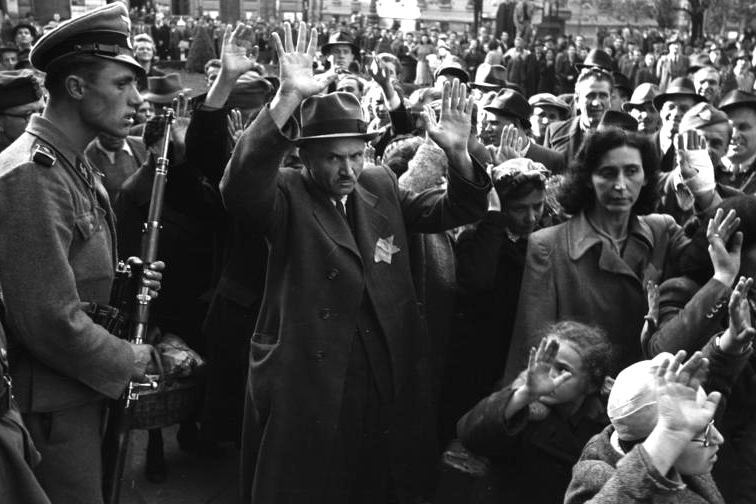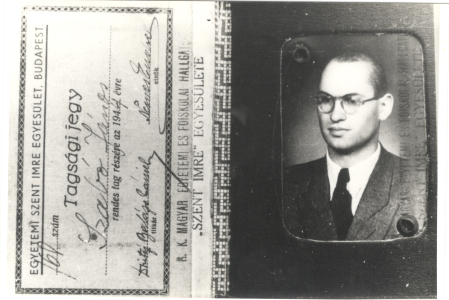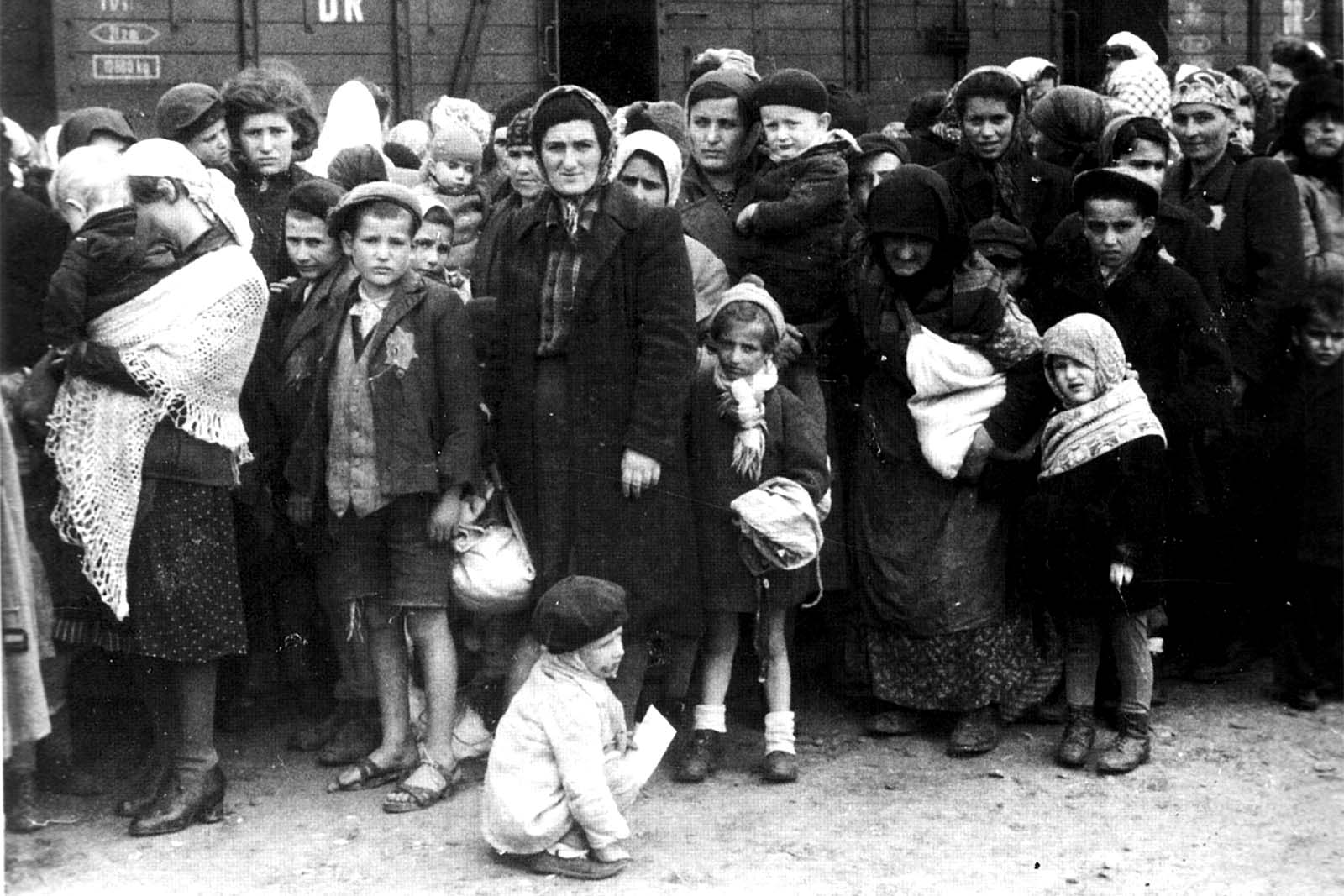
Zionist youth movements rescued 15,000 Hungarian Jews during the Holocaust, but their story still doesn’t appear in textbooks. 77 years after the dramatic events, there is not a single monument in Israel to their heroism.
Yuval Alpen, the son of Moshe Alpen, one of the leaders of the rescue project for Hungarian Jewry, is fighting to change that.
"The younger generation must know the story of the Jews who saved Jews,” he asserted.. Alpen takes it upon himself to tell the unique story of the Jews in Hungary, and the youth movements that tried to save them.
During the spring and summer of 1944, when the Nazis invaded Hungary, most of the country's Jews were sent to Auschwitz. Many others were killed in pogroms led by the Hungarians. Jews were exterminated in Hungary faster than anywhere else during the Holocaust. In less than nine months, over 550,000 Jews were killed, including about three-quarters of Hungarian Jewry and many who came to the country after the annexation of Austria and the occupation of the Czech Republic.
In the midst of the mass extermination, members of the youth movements initiated an unprecedented rescue operation. They smuggled over 15,000 Jews to Romania, most of whom later immigrated to Israel. At the same time, members of the youth movements forged documents and rescued children. The operation lasted about six months, until Romania joined the Allies, and the Hungarian-Romanian border became a battlefield.
Hungary fought alongside Germany in World War II. Miklos Horthy, the de facto ruler of the country, was an ardent anti-Semite, but he opposed Nazi extremism and the far-right extremist Arrow Cross party that was operating in his country.
“The movements were the first to identify the severity of the situation”
"In Hungary, there were clear anti-Jewish laws. Still, the Jews, because of how involved they were in society and the state, were able to keep themselves safe," explained Alpen, who heads the Association for the Study of Zionist Youth Movements in Hungary.
On the eve of the Nazi invasion, the lives of Jews in Hungary were relatively comfortable. Protecting the lives of Jews was a way for Horthy to strengthen his ties with Western countries, whom he expected to eventually win the war.

The late German invasion of Hungary was intended to secure the supply route to the Soviet front and the means of withdrawal for the German army. Prior to the invasion, most able-bodied Hungarian men were abducted to perform forced labor.
"At one point, there were no young men left in the big cities and those who remained were mostly refugees from Poland and Slovakia," Alpen said. "Some had evidence of what was happening in Auschwitz and they began to warn the Jews. At that point, the Zionist youth movements began to prepare for going underground. The rest of the public, by comparison, thought the Germans would not enter Hungary."
Although the Zionist movement in Hungary was relatively small compared to other countries, many Zionist youth movements operated in the country. Prominent among them were Hashomer Hatzair, Dror, HaNoar HaTzioni, Akiva, and others, who united on the eve of the invasion under one body known as the Zionist Underground. The Underground played a crucial role in the rescue operation.
According to Alpen, "the movements were the first to identify the severity of the situation."
"At the beginning of the invasion, the movement's leadership worked mainly to save the members of the movement,” Alpen said. “Only then did they begin an operation to rescue other Jews. After much debate, they decided to initiate an unprecedented rescue operation, which they called Operation Trip. It consisted of getting 15,000 Jews out of Hungary and compiling forged certificates for an additional 120,000 Hungarian Jews.”
Alpen explained that each youth movement had its separate area of operation, from recruiting new members, forging documents or hiding people. The Hungarian underground consisted of several thousand people constantly rotating as some fled and some made it to Israel. The hard core of this underground were the youth movement members, numbering around 400.
Alpen laid out the logistics of the rescue operation.
"This was a very complex logistical operation. I doubt the Mossad could organize it today,” he said. “The Jews fled via a train that left Budapest for the mountains of the border cities with Romania, and from there, with the help of border smugglers, they reached Romania. Some Jews managed to keep going and got to Israel, even during the war."
Crossing the border was difficult and dangerous, for the fugitives and smugglers alike. The refugee groups numbered between eight and ten people and they were assembled in Budapest. Each refugee received individual preparation.
"They were given fake documents and a cover story was prepared and rehearsed so they would know how to act in front of the inspectors,” Alpen said.
"When someone was caught, they were sent to one place: Auschwitz"
Moshe Alpen, Yuval's father, born in 1919, was one of the leaders of the operation. In the underground, he was nicknamed the "Elephant,” because it sounded like his last name.
Before the war, he was a leader in Hashomer Hatzair in Slovakia. The movement decided to send him to Hungary to help with the underground Zionist activities because of the severe shortage of men. Some of Alpen’s friends immigrated to Israel, while others went to fight the Nazis as part of the Partisan Brigades. Alpen became the leader of the movement in Budapest.
The leaders of the underground youth movements took care of preparing the refugees. They provided appropriate clothing, documents, and money on the train, at the border and in Romania. But the highlight of the operation was the intensive instruction on their new identities.

"Dad would meet with the group at a cafe in Budapest in the morning," Alpen said. "He would always check that he was not being followed. Then they would fill out the fake identity documents, and, in the process, build their cover story."
The tutorial touched on the smallest details: what bag to bring, what clothes would be suitable for the weather and not attract attention, and how to stay calm in front of train inspectors.
"In the evening, they would meet them on the platform. Dad was dressed as a conductor and checked that everything was fine. For the most part, it was successful, but not always,” he continued. “When someone was caught, they were sent to one place: Auschwitz."
After the war, Alpen continued to assist the Jews to leave Europe. About 5,000 Jewish children and 1,000 staff members from 55 children's homes established as part of the rescue operation received care from members of the youth movements and assistance in their immigration to Israel. In 1945, Alpen himself immigrated to Israel and settled in Kibbutz HaOgen, where Yuval was born.
"There are no Jews left in the world, and the rest must be saved"
Alpen noted that the Hungarian Zionist movements chose to smuggle Jews out of the country, as opposed to their Polish counterparts who decided on armed rebellion, such as the Warsaw Ghetto Uprising.
"Members of the youth movements in Hungary came from the same values and Zionist origins as their comrades in Poland and Lithuania,” he said. “The Hungarian's decision to save lives came out of lengthy discussions. They could have all escaped. Their choice to stay was conscious. They wanted as many Jews as possible to survive. They fought for the sanctification of life.”
The conditions and options in Poland and in Hungary were very different. In Hungary the Jews were forewarned and escape was a possibility.
"There was a huge debate between the refugees from Poland who wanted to take up weapons, and the refugees from Slovakia, who demanded to avoid demonstrations and engage in the rescue of as many Jews as possible. In the end, the Slovakian perspective was decisive,” Alpen said.
“My father took on the responsibility of handling bunkers and collecting weapons,” he continued. “But soon he realized that this was of no use. That if they harmed the Nazis, it would only lead to the killing of more Jews."

According to Alpen, Zionist youth movement leaders in Hungary chose rescue over fighting because by then, it was clear the Germans were losing the war, and on the other hand, they understood whatbeing deported to Auschwitz meant. Plus, there were almost no men in the movement, and next to no military training.
"The thought was that there were almost no more Jews left in the world, and that the rest needed to be saved," he explained.
"Everyone knows about the Righteous Among the Nations"
Alpen says that this story, unlike the Warsaw Ghetto Uprising, is almost totally unknown in Israel because it “did not fit the ethos.”
"The Warsaw Ghetto Uprising seemed more connected to Israel’s militaristic heroism. So the story of the rescue was completely pushed aside,” he explained. “Today, we are working with our NGO, the Association for the Study of Zionist Youth Movements in Hungary, to bring the story into its proper place in the history of our people.”.
“We want the Israeli public to know the story. We don’t need medals or awards,” he continued. "The phenomenon of Jews rescuing Jews, which took place all over Europe, is almost untold. Everyone knows the Righteous Among the Nations, but they don’t know our story. When I tell these stories, most listeners are stunned. I ask children if they know that Jews rescued Jews, and there is silence."
Alpen is the deputy chairman of the Committee for the Recognition of the Heroism of Jewish Rescuers in the Holocaust. To this day, it has recognized 350 rescuers and their children. They receive an award on Holocaust Remembrance Day ceremony in the Jerusalem Forest.
Alpen and his partners have also been working for years to change the Yad Vashem Law so that it recognizes Jews who saved Jews. The law, passed in Israel 1953, established the site of Israel’s primary Holocaust museum and gave it a legal mandate to commemorate many aspects of the Holocaust. Jews who smuggled other Jews out of danger are not currently specified.
"There is great progress being made," Alpen said. "Last year, the Holocaust Remembrance Day ceremony was about Jews rescuing Jews. There are more exhibitions, more lectures on the topic."
"I do all this because it is important to me that the youth, and especially the members of the youth movements who are the same age as the rescuers were, know the story of how the youth movements chose to rescue the Jews who were not from their families,” Alpen went on. “They did not do it for money. They stayed in Hungary to save lives."






